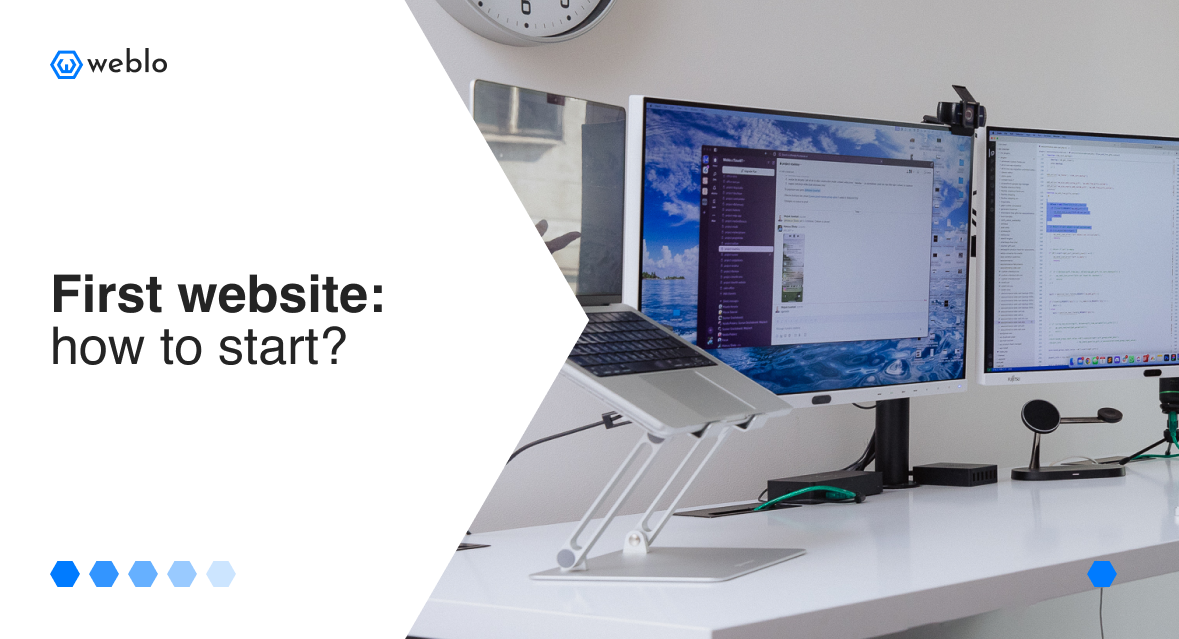First website: how to start?
In today’s world, having a website is no longer a distinguishing feature, it’s a necessity for every business, freelancer, or nonprofit. However, for many people who are
just starting out in the world of website creation, the process can seem complicated and overwhelming. We understand that. We realize that the terms backend, SEO, or Tag Manager may mean absolutely nothing to you, and that’s okay. We’re here to help you know them!
In this article, we’ll walk you through the steps that will help you create your first website, from planning to launch.
1. What is the main purpose of my website?
The first step is to define what you want to achieve with your website.
Answer the following questions:
• Is the website supposed to promote your company or services?
• Do you want to run a blog and share knowledge?
• Do you intend to sell products online?
• Do you need a platform to contact customers?
A clear definition of your goals will help you in the next steps, including choosing the right design, functionality and target strategy.
2. Choosing a domain name
A domain name is the address at which your website will be accessible on the Internet. It should be short, easy to remember, and related to the topic of your website. Tools like Namecheap and GoDaddy make registering domains easy!
3. Sitemap
At this stage, you need to consider what subpages and tabs you want to have on your website.
Of course, it depends on the type of business you run. If you run an online store, you will need different subpages than someone building their personal brand, for example. The most popular subpages are:
About Us – this tab should contain information that builds trust! It is worth writing a few words about the company’s history, its mission and introducing the team. Presenting the company’s values and unique features helps to stand out from the competition and encourage customers to cooperate!
Offer – here, focus on a detailed presentation of your services or products.
It is important that the descriptions are clear and attractive, taking into account the benefits for the customer and examples of completed projects. Transparency of prices is something that additionally attracts attention and makes it easier to make a purchase decision!
Contact – this subpage should contain easily accessible contact details, a contact form and an interactive map with the company’s location. It is crucial that your customer can quickly and conveniently establish contact and obtain the necessary information. The availability of various communication channels, such as telephone, e-mail and social media always works well!
5. Content creation and optimization
Content is a key element of any website, so it’s worth making sure it’s valuable and engaging for users!
Use keywords in titles, headings and body text to improve your visibility in search results. Above all: create content that you would like to read yourself! Avoid walls of text, and if you’re using AI tools like chatGPT – read the text before publishing 🙂
7. Design and coding
This is where we come in! This is the most difficult and often the most demanding process of creating a website, but for us it’s everyday life! We offer comprehensive services – we will not only adjust the project visually to your needs, but we will also code it in such a way that you can easily make any changes.
8. Care and development
When you work with us, even after implementation, you are not left alone!
After the project is complete, we provide comprehensive care so that you can fully utilize the potential of your website. We offer dedicated video training that will introduce you step by step to the operation of the website, allowing you to easily implement changes and updates. With our support, you will always be up to date, and your website will develop along with your needs.
Trust the experts from Weblo!




